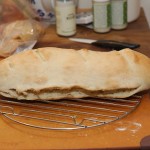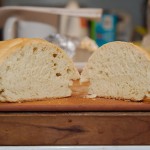Two sets from last night, a music party and my regular New Year’s portraits.
Category: Personal
Merry Newtonmas!
Remember, axial tilt is the reason for the seasons.
For the holiday, that’s something else. The reason for your particular holiday is whatever you say it is.
Oh, Look, More Kitten PIctures!
Keep citizens armed and safe
Guns are the great equalizer. They let older, smaller, less athletic, less able-bodied people stand a chance when young, fit, energetic, predators try to prey on them.
Citizens use guns hundreds of thousands of times (or millions; it’s hard to define and hard to measure, but numbers I’ve seen from research papers range from maybe 250,000 to 7.5 million) each year to defend themselves from crimes. Guns save lives.
There are, I think, four main problems leading to the sort of rapid mass murder scenario we’ve had recently in Connecticut.
First, people are being pushed to the wall by social expectations of conformity and roll fulfillment, competition, and such, way too often.
Second, the culture of celebrity tells people that being “famous” is the greatest thing that can happen to a person. People who have seen every aspect of their life collapse can still view themselves as a success if they become famous.
Third, mainstream culture fetishizes the gun as a magical implement that bends people to your will, makes you taller, and so forth, while keeping people terrifically ignorant about real guns. This is not an attitude you find among actual “gun nuts”!
Fourth, getting assistance with mental health issues is stigmatized, and is not well supported in the health care system (which in turn doesn’t cover nearly enough people well enough in the first place).
Occasionally, these things come together with appallingly tragic results.
And, immediately, people start demanding that we take action against…none of the above. Instead, they want to deny basic civil rights to everybody in society.
Also, Bread
I’ve never actually made bread before (I’ve made pie crust, and baked a couple of cakes, but not much baking in general). So I decided I wanted italian bread tonight.
To me, that means a white bread, somewhat freeform loaves (but tending more towards oval than circular). A tight, somewhat chewy crumb. And fairly heavy crust, though thinner and less crunchy than “French bread”.
I started from this basic recipe.
On first making it, I ended up using about 2 ¾ cups of flour. I may have left the dough slightly too moist, but not disastrously. I had to scrape it down off the sides of the bowl and off the dough hook of the mixer a couple of times, which Pamela says is normal. I didn’t feel it had risen enough in half an hour, so I gave it another half hour, and then punched it down. Rising was in the lower oven on the “proof” setting, I didn’t measure the actual temperature, but it felt reasonable.
I didn’t do anything to emphasize the crust, no basting, no pizza stone, no water pan in the oven.
Ingredients
1 envelope (¼ oz.) active dry yeast
1 tsp sugar
1 cup warm water (100° – 110°)
2 to 3 cups bread flour (I used unbleached general purpose)
2 TBS olive oil
1 tsp salt
Procedure
Combine yeast, sugar, 1 cup warm water in mixer bowl. Let stand 5 minutes (and check for yeast activity).
Add 2 cups flour, oil and salt to bowl. Beat on low (I used the lowest speed on our KitchenAid) with dough hook for 1 minute.
Gradually add up to 1 cup additional flour until dough leaves sides of bowl and polls together (dough goes through a “shaggy” stage in here). With our mixer we have to push flour into the dough hook some. Add flour until the dough is the “right” consistency, which is soft and smooth, not wet, sticky, or overly dry with a rough surface.
Increase speed to medium and beat 5 minutes (I used the second-lowest speed).
Get dough off hook and make a ball in the bottom of the bowl. Cover this closely with plastic and let rise 30 minutes in a draft-free place at about 85° (I used the bottom oven on the “proof” setting). Let rise for 30 minutes or until doubled in bulk (I ended up giving it an hour), then punch down.
Start oven preheating to 400°.
Punch down and let stand 10 minutes (I put it back in the oven under plastic).
Take dough from bowl (it may have been a bit too moist, it tried to stick just a bit) and place on lightly floured surface. Form into loaf, about 12 inches long.
Place dough on lightly greased cookie sheet
Make 3 ¼” deep scores across the top with sharp knife to let the steam out (mine had kind of crude slashes, the dough tended to stick to the knife; and steam blew out one side of the loaf).
Bake at 400° for 16 minutes or until golden brown. Should make a nice hollow sound when rapped on the bottom. (I ended up at about 20 minutes).
Cool on wire rack.
Slice and eat!
Analysis
I liked the way the bread texture came out. The crust is too thin; it even looks wrong from outside. Taste is tolerable (at least when fresh). This kind of tastes like what I think of as good bread machine results, i.e. mediocre, but fresh bread is always good.
Next time I want to try something to increase the crust, maybe painting it with water.







